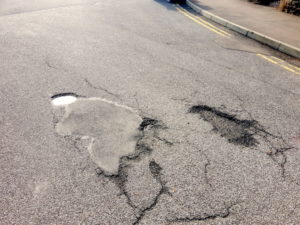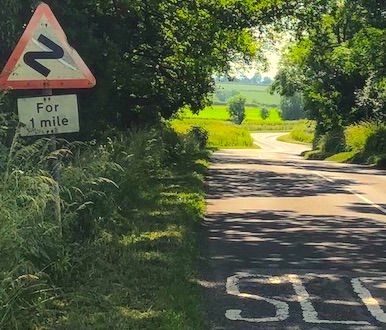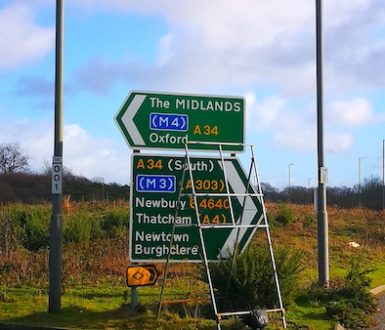Why are there so many potholes?

Ah, the joy of the open road… a long road journey seems exciting, but that soon fades if you hit one of the many thousand holes in Britain’s roads – and end up with a burst tyre.
Just why do our roads have such a bad surface? Part of the reason is our weather.
In many countries, it gets cold in winter and then warms up in the spring – this means there is one cycle of freezing and thawing. But in Britain the weather keeps changing from cool to warm. In just one winter, water on the roads might freeze 40-50 times. Each time, the freezing causes damage. By spring, the road surface can have holes (called ‘potholes’) where the surface has broken.
Another cause is heavy lorries driving on roads not built for such large vehicles. They gradually damage the surface and can even make the road lumpy. Potholes aren’t just bad for your car, they can also be dangerous. In 2018, there were 8 people killed and 170 seriously injured because of problems with the road surface.
Potholes are not very common on motorways or large A roads. These roads are usually well built and cared for. But there are 346,000km (215,000 miles) of smaller roads – that’s over 8 times the circumference of the globe! The maintenance is paid for by local government, but the money usually only pays to fill the existing potholes and is not enough to improve the road surface.
Unfortunately, annual spending by councils has not kept pace with cost increases and the results are extremely obvious, with little money available for proper resurfacing. In 2023, the Asphalt Industry Alliance said nearly 37,000 miles of roads had less than 5 years of life left. It is estimated that it would cost nearly £14bn to carry out all the road repairs that are needed in England and Wales.
Of course, councils can only repair potholes that they know about. To report a pothole:
- In England & Wales: https://www.gov.uk/report-pothole
- In Scotland: https://www.mygov.scot/report-pothole/



